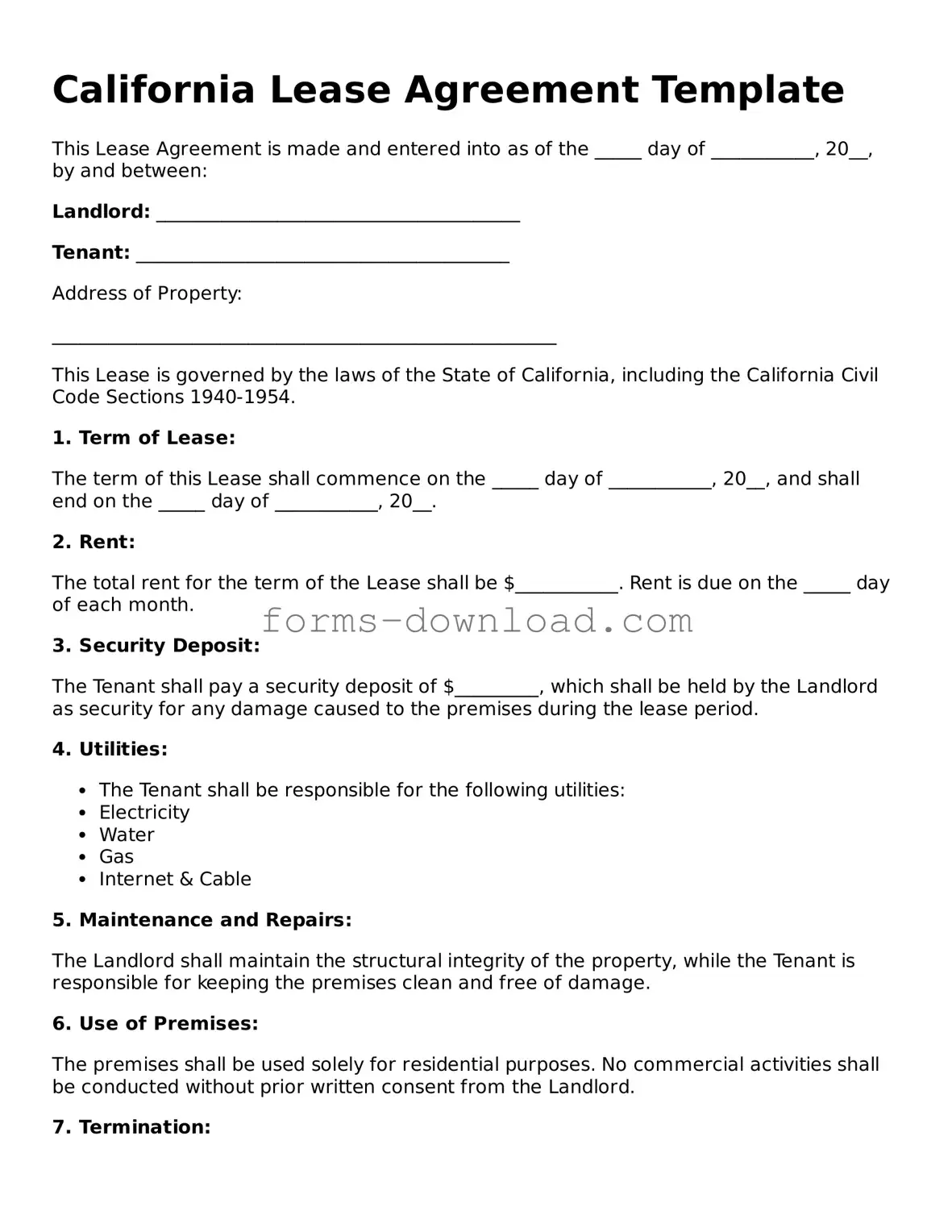California Lease Agreement Template
This Lease Agreement is made and entered into as of the _____ day of ___________, 20__, by and between:
Landlord: _______________________________________
Tenant: ________________________________________
Address of Property:
______________________________________________________
This Lease is governed by the laws of the State of California, including the California Civil Code Sections 1940-1954.
1. Term of Lease:
The term of this Lease shall commence on the _____ day of ___________, 20__, and shall end on the _____ day of ___________, 20__.
2. Rent:
The total rent for the term of the Lease shall be $___________. Rent is due on the _____ day of each month.
3. Security Deposit:
The Tenant shall pay a security deposit of $_________, which shall be held by the Landlord as security for any damage caused to the premises during the lease period.
4. Utilities:
- The Tenant shall be responsible for the following utilities:
- Electricity
- Water
- Gas
- Internet & Cable
5. Maintenance and Repairs:
The Landlord shall maintain the structural integrity of the property, while the Tenant is responsible for keeping the premises clean and free of damage.
6. Use of Premises:
The premises shall be used solely for residential purposes. No commercial activities shall be conducted without prior written consent from the Landlord.
7. Termination:
Either party may terminate this Lease by providing _____ days written notice to the other party, unless otherwise specified in this Agreement.
8. Governing Law:
This Lease shall be governed by and construed in accordance with the laws of the State of California.
Signatures:
Landlord: ______________________________________ Date: ______________
Tenant: ________________________________________ Date: ______________
Both parties agree to the terms outlined in this Lease Agreement.
